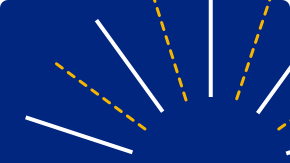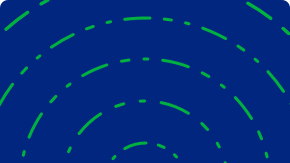Privileged accounts give select users within the company special privileges to perform critical business functions such as accessing confidential company information, resetting user passwords, and making changes to IT infrastructure systems. If these accounts are compromised, it can put the enterprise at serious risk.
With privileged access management (PAM), organizations can enable those who need privileged access to obtain it while protecting critical business systems from destructive cyber attacks. Here are eight benefits of privileged access management.
1. Control access to privileged accounts.
Today, many organizations lack full visibility into their privileged accounts, whether on-premises, in the cloud, or both. Many organizations manually keep track of privileged account passwords using spreadsheets, an inefficient practice that increases risk.
Without the visibility they need, it’s difficult for administrators to know which users have access to what information, especially as the company grows and employees, contractors, and other users change roles or leave the company.
Using privileged access management, organizations track privileged access from a single location, automatically provisioning and deprovisioning users as their roles change or they leave the company. They can monitor and record sessions to increase their visibility into privileged account activity.
The enterprise can also utilize PAM to generate a searchable archive of user activities, enabling them to meet compliance regulations and review access should suspicious activity occur. With a straightforward way to monitor privileged accounts, companies can ensure they maintain control over their most valuable assets.
2. Prevent privileged account attacks.
Privileged credentials are a prime target for external hackers since they hold the keys to an organization’s most sensitive data. These accounts are also vulnerable to misuse by disgruntled ex-employees, who are the cause of many of the most catastrophic security breaches.
By storing the credentials of privileged accounts in a separate and secure repository, PAM enables companies to isolate their use and track their activity, effectively lowering the risk that they’ll be misused or stolen. Administrators can also set up privileged access management to have established time limits and other rules for user access, as well as automatically remove privileges as soon as an individual moves to another role or leaves the company—limiting access to those who truly need it.
3. Regulate access in one location.
Some companies manage privileged accounts and credentials within organizational silos, using inconsistent enforcement and best practices in different parts of the enterprise. Not only does this make management complex, it subjects the company to increased risk.
With privileged access management, organizations can manage all of their privileged accounts from a central location—regardless of platform, hardware device, application, or the service being used. A centralized access manager makes it easier for organizations to see which users and groups have access to sensitive systems and data, while maintaining control over the exact permissions allowed for each user and group. This streamlines the management process, streamlining the process for granting and removing access as needs change.
4. Restrain credential sharing.
Many administrator accounts are shared across multiple individuals within the organization, and for the sake of convenience they often use the same password across multiple systems. These practices can make it impossible to determine which actions were performed by specific individuals—increasing a company’s security risk and demonstrating a lack of compliance with regulatory mandates.
Privileged access management helps organizations guard against these risks by ensuring every individual uses a unique login. PAM also requires strong passwords, mandating routine change based on the degree of sensitivity of the account. Administrators can also set up privileged access management with single sign-on (SSO) authentication to hide passwords from users and ensure password strength every time users access valuable assets.
5. Review risky behavior notifications in real-time.
Privileged access management grants administrators real-time email and text notifications to alert them to risky or suspicious activity. Admins can configure alert settings to receive notifications each time a privileged user accesses specific data or systems, when potential policy violations occur, or in the case of flagged risks, such as too many assigned privileges to specific accounts.
With the ability to review notifications in real-time, administrators can quickly make the changes needed to maintain a high level of security at all times.
6. Fast deployment.
Unlike the first generation of privileged access management, modern solutions require minimal changes to an organization’s existing environment and business processes, making them easier to implement. The availability of SaaS-based PAM solutions means that organizations don’t endure the hassle of deploying PAM software, saving valuable time.
And most privileged access management tools integrate well with a company’s current systems and application deployment methods. This fast deployment enables the enterprise to experience immediate value from PAM without requiring changes to the way users work.
7. Integrate with identity and access management systems.
Privileged access management offers integration capability with an organization’s broader identity and access management (IAM)—closing security gaps and eliminating redundant processes for privileged and non-privileged accounts. By combining the power of PAM with identity governance, companies can leverage automated provisioning and deprovisioning along with faster reporting and auditing across all of their user accounts. In turn, this saves time and reduces the complexity of protecting all user identities.
8. Uphold IT compliance.
To optimize security, the law requires many industries to apply “least privilege access policies” that restrict access rights to the absolute minimum number of users necessary to perform routine, authorized activities. They’re also required to maintain a comprehensive audit trail of their privileged users while reviewing a percentage of their privileged workloads for suspicious activity.
By implementing a PAM solution, administrators can automatically monitor and record all privileged activity across their IT environment. They can also archive these activities, establishing audit-friendly processes that make it easy to meet regulatory requirements.
A unified approach
Managing privileged access is an important part of a company’s overall identity governance strategy. With privileged access management, companies enable privileged access to those who need it while protecting their systems from harmful attacks that can compromise the business.
When PAM is integrated with the broader identity and access management system, the enterprise can achieve a unified governance approach for all employees regardless of their role or level of access. This integration enables users to request, provision and attest to privileged and standard user access, using the same process, saving time while reducing the complexity of protecting all user identities.
SailPoint is a leader in integrating privileged access management with identity and access management, helping organizations easily manage both privileged and standard accounts. Learn how SailPoint can integrate with your PAM solution.
You might also be interested in:
Unleash the power of unified identity security.
Centralized control. Enterprise scale.


